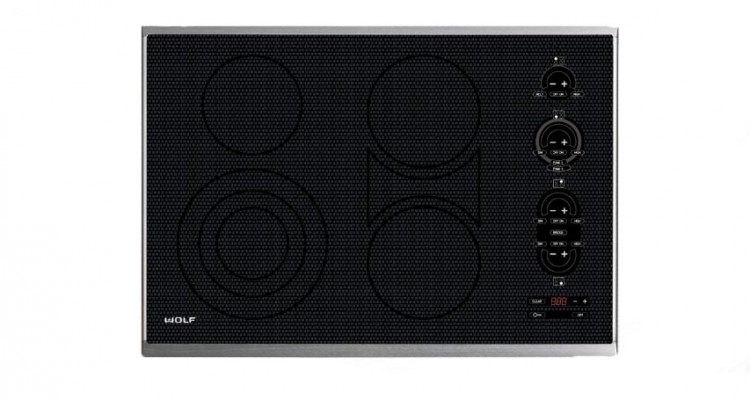On the showroom floor, few cooktop match the innate class and quality that Wolf Electric Cooktops show off. There’s just something different about that textured glass, the elegantly simple touch controls, and the thick stainless trim around the edges. It’s hard to explain, but it just looks and feels expensive (and of course, it is).
 The Wolf Induction Cooktop comes in three different sizes: a 15” module for those with a lack of space or those who wish to extend the cooking space further, a 30” cooktop with four burners, and a 36” with five burners. Now while some manufacturers try to fit an extra burner at the different size levels, it ends up limiting your cooking ability rather than expanding. I mean, really – when was the last time you had six pots cooking at the same time?
The Wolf Induction Cooktop comes in three different sizes: a 15” module for those with a lack of space or those who wish to extend the cooking space further, a 30” cooktop with four burners, and a 36” with five burners. Now while some manufacturers try to fit an extra burner at the different size levels, it ends up limiting your cooking ability rather than expanding. I mean, really – when was the last time you had six pots cooking at the same time?
So instead of going into the physics of how induction works, let us just state that it works. It is faster than gas and a miracle of modern living. While the technology for induction is relatively straightforward, there is still room for improving cooking performance – and Wolf is, so far, the only brand that has made changes to the typical single coil design.
Under each burner, in virtually every induction cooktop on the market today, is a single Litz wire coil, generating heat from the center of the pan out. In the Wolf induction cooktop, there are four smaller coils in a square configuration on each burner. This allows the Wolf induction burners to heat the pan evenly and allows for Wolf to achieve its signature even “melt” setting for melting and holding chocolate, butter, and delicate sauces.
The Wolf Induction Cooktop is also one of the most quiet induction cooktops out there. It’s High Power mode diverts power from the other burners to generate a whopping 3000W of power – perfect for boiling water in record time. While its purchase price isn’t advertised, I can tell you it is indeed one of the most expensive induction cooktops on the market.
And maybe the best.
Pros: Most intuitive touch controls yet, reeks of quality, four coils on each burner.
Cons: None, other than the price.


Leave a Reply
You must be logged in to post a comment.
Login and Post with: